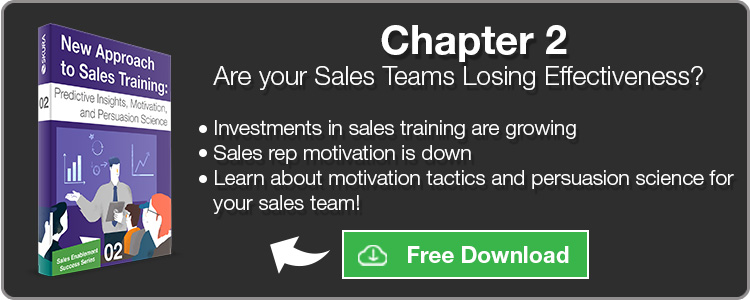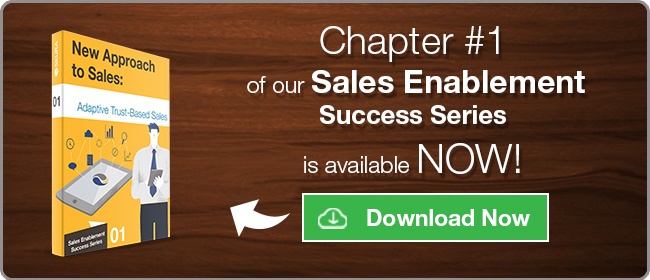The P&C insurance industry is undergoing some radical disruptions to the established sales process, and consumers are now favouring a digital sales distribution over in person interactions, especially for easier policy purchases.
Today we examine why this shift is occurring, and what the future of P&C might look like after the dust settles.
There are major disruptions in P&C insurance. Unpredictable organic growth opportunities are pushing many insurance carriers to look internally for profitability improvements through trimmed expenses and optimized operations.
A consumer shift in distribution medium preference is altering the way that insurance is being purchased, and the value of a local agent is being brought into question - especially for straightforward policy interactions.
These trends are explained at length in our last post about disruptions in the P&C insurance industry. CLICK HERE to read that post.
Let’s examine why this shift is happening, and how it impacts the future of the P&C sales process.

(Image Source: Business2Community)
Marketing Spending in P&C Insurance
We previously hypothesized that though empowered buyers tend to enjoy progressing their own decision journey thus favouring a direct channel of interaction, it doesn’t explain why the shift would have been so pronounced within auto insurance, yet so minimized within homeowners and commercial.
Looking elsewhere for correlations,major insurance carriers are also increasing marketing spending to rates that far exceed average.
Between 2002 and 2011 in fact, advertising expenditure has grown by a rate of 347% among P&C carriers. See image 1 below for a visual breakdown of this change over time (Source: McKinsey, 2013). With the exception of 2008, where the industry saw a major drop in ROI due to a toxic investment environment and depressed earning, spending has increased every single year.
Since 2011, there has been a 15% year-over-year increase in advertising expenditure.

Image 1
What is Being Communicated?
Advertising expenditure by itself isn’t disruptive, but the marketing content that is being communicated influences the outcomes of that advertising. With such significant ad spending occurring in conjunction with shifting buyer preferences, it stands to reason that these advertisements are influencing the move to direct distribution.
P&C ad spending is largely focused around three general themes: (Source: Bain&Company, 2014)
- Low price;
- Peace of mind; and
- Convenience (to a lesser extent).
Price-focused communications are the most frequent, and consequently, the best price is often achieved through a direct medium. McKinsey states that the majority of advertising communications within P&C are also acquisition-based.
An interesting correlation is seen in 2010, where 22% more auto insurance quotes were made online that year (Source: Agency Revolution, 2014). That same percentage increase was also seen in advertising expenditure for the year, from 4.2 billion to 5.1 billion for the industry (refer to image 1).
The Impact of Price-Heavy Advertising
Steadily increasing advertising that focuses on price as a primary differentiator also commoditizes the insurance product. Consumers are increasingly conditioned by carriers to compare on price, and as a result customer loyalty is declining while acquisition costs are ballooning.
One analyst pointed out that the P&C insurance industry has anywhere from 7 to 9 times the average acquisition costs of any other industry (Source: IIA Dallas).
The gradual increase of auto insurance advertising prompting consumers to compare on price is also shifting primary decision variables. Bain&Company found that personal line consumers (home and auto), now prioritize price over other decision variables. Two-thirds of consumers now shop around at more than one carrier, but for those who are price sensitive, the rate is even higher at 84% (Source: Bain&Company, 2014).
Nobody is Good at Everything
Interestingly, those carriers who excel at acquisition fair poorer at retention and cross-selling. Meanwhile, the opposite is seen for those who excel at retention.
See image 2 below for a visual breakdown of 15 top insurance carriers as they relate to acquisition, retention, and cross selling (Source: Bain&Company, 2014).

Image 2
Companies like GEICO and Progressive are increasing their spending on acquisition, and Bain&Company notes that GEICO is turning into more of an acquisition machine. Top acquisition carriers also spend roughly 50% more than average on advertising per customer.
On the opposite side of the spectrum, USAA and State Farm dominate retention and cross selling. State Farm is recognized for advertising communications that promote ‘peace of mind’ among P&C consumers, whereas USAA invests heavily in value-added consumer benefits such as physical locations that educate consumers on their options and help them achieve strategic priorities (Source: Bain&Company, 2014).
Image 3 below shows the 2012 and 2013 advertising expenditure of the top 8 US P&C carriers (Source: Dispatch, 2014). USAA is 10th on the list, with $60 million in 2012 and $133 million in 2013 (Source: Property Casualty 360, 2014).
In all, leaders of auto insurance acquisition spend 4.7% of net written premiums on advertising, where all other auto insurers spend only 2.4% (Source: Bain&Company, 2014).

Image 3
Influence on the Consumer
Acquisition Channel Choice – More than 60% of auto insurance acquisition-leaders see their new business through digital (online) and call centers, meanwhile the opposite is seen among all other auto insurers where 60% are acquired by an agent (Source: Bain&Company, 2014).
Demographics – More than 60% of the consumers for auto insurance acquisition-leaders are under the age of 44, and earn under $50,000. Meanwhile, more than 60% of consumers for auto insurance-retention leaders are above the age of 45, and earn over $50,000 per year (Source: Bain&Company, 2014).
Preferences – Among auto acquisition-leaders, more than 50% of their consumers are price-focused, whereas with auto retention-leaders, fewer than 20% are price focused. A majority of customers (60% to 65%), are peace-of-mind focused (Source: Bain&Company, 2014).
Two Distinct Sales Strategies
It is important to note that the millennial generation represents the largest and fastest growing P&C insurance segment. This category is heavily influenced by price as a major determining factor for personal (home and auto) insurance; however, annual salaries divide this group and their individual preferences, where wealthier individuals prefer peace-of-mind over best price.
Carriers are in a position to maximize acquisition, but at a significantly reduced lifetime value, share of wallet, retention, and low referrals. Those who create loyal advocates on the other hand, have a lifetime value per customer that is 6.8 times greater than P&C insurance detractors, and 2.7 times greater than passive insurance consumers.
We therefore see two distinct strategies: one focused on retention, and the other on acquisition. Note that these aren’t "set-in-stone" decisions but rather a spectrum within which to operate.
There is a clear difference between those carriers who excel at acquisition and those who excel at retention. See image 4 below for a clearer view of this. A major gap exists among carriers who are better at both, and at least 6 who offer the losing proposition of being worse at both (Source: Bain&Company, 2014).

Image 4
These trends make sense from the perspective of an empowered buyer, who would value an adaptive sales approach that delivers on the expectations characterized by their buyer persona. If you’re new to buyer personas, I invite you to CLICK HERE and read our previous article that explains buyer personas in detail, and how they influence digital content marketing decisions.
As for adaptive sales, we deail this process in the second chapter of our “Sales Enablement Success” series. Though recent for P&C insurance, this general trend is being experienced across many industries, and at SKURA we’re familiar with optimizing a sales process for value-added outcomes as they relate to these distinct strategies. Click the link below for a FREE copy of that report.
Is it Possible to be Better at Acquisition AND Retention?
The current competitive landscape favours one or the other, but as organic growth becomes more uncertain, and commoditization of P&C insurance products threatens competitive advantage and profitability, a gap remains to be exploited for those carriers who can excel both at acquisition and retention.
The secret lies with integrated closed-loop automation technology that maps buyer decision journeys and enables predictive analytics for value-added interactions. This type of technology-based strategy allows a consumer to progress their own decision journey, contact a seller (agent or carrier) on their own time, and always have interactions that are relevant and in context to past channels and discussions.
This is clearly an oversimplification, and to better understand the challenge you must realize that P&C insurance is plagued by poor data integration, lagging indicators, and elementary buyer segmentation, often by price and medium (Source: McKinsey, 2013; and: EY, 2015).
There are three strong technology platforms in use by many best-in-class organization to leverage better 360 degree customer views and predictive analytics. They are marketing automation, CRM, and sales enablement. Within P&C insurance, there are additional underwriting, asset, and risk management platforms to coordinate, and this is exactly why the best sales enablement solutions and marketing automation platforms integrate openly with multiple data sources.
In chapter one of our “Sales Enablement Success” series we cover the trends influencing sales and marketing operations across advanced economies, and these are growing more and more applicable to P&C. Those companies who leveraged these technologies for integrated CRM and extensive visibility into consumer behaviour, also saw improvements in revenue, acquisition, retention, quotes turning into orders, seller (agent) efficiency, and marketing contribution to sales. Click the link below for FREE access to this eBook.
The Commercial Insurance Situation
If you read our last post about the trends disrupting P&C insurance, I’m sure you’re asking “what about commercial lines?”
Commercial insurance is purchased exclusively through an agent, with less than 1% of commercial P&C buyers using a direct channel.
There are many reasons for this, including the general B2B atmosphere around commercial insurance, but consumer preferences are shifting drastically, especially among small businesses and young business owners. It is unlikely that we will see a commoditization of commercial insurance anytime soon, but those who push the envelope on technology integration and omni-channel digital sales reach stand to gain significantly.
In a future post, I’ll delve into the world of commercial P&C, buyer perceptions for this market, and strategies for success with carriers and agents.
Commoditized Auto Insurance and the Independent Insurance Agent
Since auto lines represent 30% to 60% of the policies on an agent's books, it is reasonable to see that the decline of agen-brokered policy underwriting for personal lines will lead to a decline of independent insurance agents overall (Source: McKinsey, 2013).
That said, the retention versus acquisition trends detailed above do present a significant avenue for not only sustainable, but sustained growth among those agents who can specialize, narrow targeting, and create personalized value for the buyer.
6 out of 10 insurance consumers stated that they receive no other particular service from their agent beyond shopping for coverage (Source: Agency Revolution, 2015).
Retention strategies enable an agent to avoid costly acquisition strategies and benefit from referral traffic. Research suggests that those agents who leveraged emerging technology, like the solutions we explained for adaptive selling, also saw immense improvements to their customer satisfaction that far exceeded all other categories of insurance interaction.
This group also experienced greater referral traffic and cross-selling. See image 5 below for a breakdown of satisfaction score versus insurance interaction (Source: Agency Revolution, 2014).

Image 5
If you’re interested in learning about how emerging technology like sales enablement empowers agents to add targeted value to P&C consumers, follow THIS LINK to our previous article “3 Ways to Meet your Buyers Where they want to be Met with SKURA Sales Enablement.”
I want to leave you with two comparative charts that display a very close relationship to the importance of “wowing” P&C consumers, and the subsequent retention rates. Image 6 below illustrates retention rate versus customer satisfaction score (Source: Agency Revolution, 2014), where image 7 below illustrates customer defections versus Net Promoter Score (NPS) (which is a measure of how willing a consumer is to promote your insurance products) (Source: Bain&Company, 2014).


Image 6 in Colour
Image 7 in Black & White












